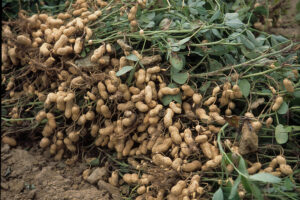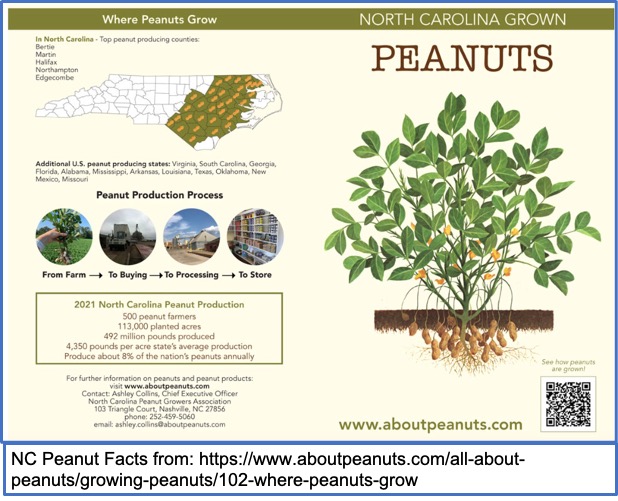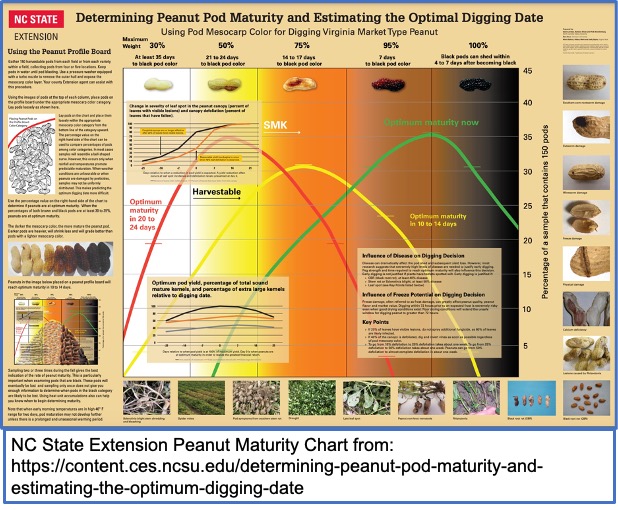Peanut Production in North Carolina
go.ncsu.edu/readext?961303
en Español / em Português
El inglés es el idioma de control de esta página. En la medida en que haya algún conflicto entre la traducción al inglés y la traducción, el inglés prevalece.
Al hacer clic en el enlace de traducción se activa un servicio de traducción gratuito para convertir la página al español. Al igual que con cualquier traducción por Internet, la conversión no es sensible al contexto y puede que no traduzca el texto en su significado original. NC State Extension no garantiza la exactitud del texto traducido. Por favor, tenga en cuenta que algunas aplicaciones y/o servicios pueden no funcionar como se espera cuando se traducen.
Português
Inglês é o idioma de controle desta página. Na medida que haja algum conflito entre o texto original em Inglês e a tradução, o Inglês prevalece.
Ao clicar no link de tradução, um serviço gratuito de tradução será ativado para converter a página para o Português. Como em qualquer tradução pela internet, a conversão não é sensivel ao contexto e pode não ocorrer a tradução para o significado orginal. O serviço de Extensão da Carolina do Norte (NC State Extension) não garante a exatidão do texto traduzido. Por favor, observe que algumas funções ou serviços podem não funcionar como esperado após a tradução.
English
English is the controlling language of this page. To the extent there is any conflict between the English text and the translation, English controls.
Clicking on the translation link activates a free translation service to convert the page to Spanish. As with any Internet translation, the conversion is not context-sensitive and may not translate the text to its original meaning. NC State Extension does not guarantee the accuracy of the translated text. Please note that some applications and/or services may not function as expected when translated.
Collapse ▲Over the past several months I have had the opportunity to participate in a Southern Row Crops Production course through NC State University. During this course, participants were introduced to several different crops (corn, soybeans, tobacco, peanuts) while visiting local farms and research stations to review different cropping systems at various management stages. In this week’s column, I would like to share with you my experience while visiting the peanut production fields and introduce our readers to a unique crop that is rarely seen in Pamlico County.
 Peanuts are generally thought to originate from the countries of Brazil and Peru, spreading across the globe during the Age of Exploration and colonization of the Americas. While peanuts can now be found growing across the globe, the majority of the U.S. peanut production comes from 10 southern states stretching from New Mexico to Virginia, with the state of Georgia producing the greatest quantities. In 2021, North Carolina ranked 5th in the United States in peanut production, producing almost 496 million pounds of peanuts.
Peanuts are generally thought to originate from the countries of Brazil and Peru, spreading across the globe during the Age of Exploration and colonization of the Americas. While peanuts can now be found growing across the globe, the majority of the U.S. peanut production comes from 10 southern states stretching from New Mexico to Virginia, with the state of Georgia producing the greatest quantities. In 2021, North Carolina ranked 5th in the United States in peanut production, producing almost 496 million pounds of peanuts.
In North Carolina, peanuts are typically grown on deep, fine, sandy loam soils, which explains why the top 5 peanut producing counties (Bertie, Martin, Edgecombe, Pitt, and Halifax) occur in the Northeastern part of the state where these soils predominate (Coastal Plains Region). The majority of peanuts grown in North Carolina are described as “Virginia Type” peanuts, known for their large size and use for in-shell and cocktail peanuts.
Peanut producers have a narrow planting window in North Carolina, with insect pests, disease development, and plant maturity limiting optimal planting conditions to the first three weeks of May. During a field visit to the Upper Coastal Plains Research Station in Rocky Mount, NC in late June, participants in my Southern Row Crops class observed peanut plants exhibiting slow growth and vigor from prolonged cool spring temperatures. This slow early growth can place peanuts at greater risk from persistent thrips insect injury and greater weed pressure all season. Season long weed control is an important factor in achieving high yielding peanuts, especially considering the reduced number of control options available to peanut producers when compared to other crops.
When visiting this same field location in Rocky Mount in late September, peanut plants were observed having achieved much greater growth resulting from persistent warm summer temperatures. During this late September visit, participants also discussed peanut harvest and the factors it takes to determine optimal timing to achieve the greatest return on investment. Two of these factors involve the relationship between disease development and peanut pod maturity. Peanuts flower and form pods over an extended period (indeterminate growth), resulting in pods with different degrees of maturity at harvest. Harvesting peanuts too early with few mature pods can result in lower value, while waiting too late can result in greater digging losses from over mature pods. To help producers determine when harvest should occur, NC State Extension promotes the use of field sampling and removal of the outer peanut shell (exocarp). By removing the outer shell, this exposes the underlying mesocarp color, which directly correlates with the maturity of peanut seeds within the pod. Darker color equates to maturity and the need to harvest soon, while lighter color signals that growers should wait several days before resampling and potential harvest. Late season disease development is also a critical factor when making harvest decisions. Fields with heavy pressure from leaf spot diseases can defoliate plants, prompting plants to prematurely separate pods from their plants. Since digging and harvesting peanuts requires the firm attachment of pods to peanut plants, premature separation results in peanuts remaining in the soil during harvest and the eventual loss of profit.
Peanuts are fascinating plants to grow and delicious to eat. Readers desiring to grow peanuts in Pamlico County should consider reviewing this Extension Note from Clemson University with detailed instructions for the home gardener. For those craving to learn more about peanuts and their production, you can also visit the Virginia Carolinas Peanuts website and discover interesting peanut facts and recipes from the North Carolina, South Carolina, and Virginia Peanut Growers’ Associations. Finally, consider visiting the NC State Extension Peanut Portal to learn about peanut production in North Carolina. Should you have more questions about peanuts or other NC crops, please contact Daniel Simpson at 252-745-4121 or Daniel_simpson@ncsu.edu.





